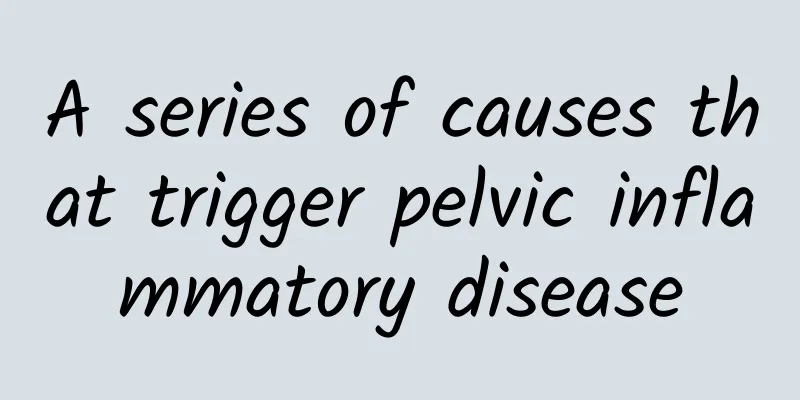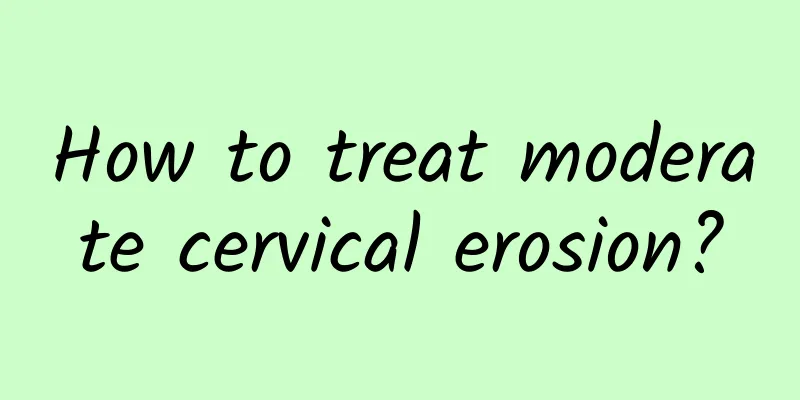Methods for diagnosing and treating third degree cervical erosion

|
Among gynecological diseases, cervical erosion is relatively common. If a female friend suffers from this disease, her health will definitely be seriously threatened. Therefore, patients need to take active treatment to cure the disease earlier. So what are the diagnosis and treatment methods for cervical erosion? What are the methods for diagnosing cervical erosion? 1. Gynecological examination. The diagnosis method of cervical erosion focuses on checking the size, shape, texture, thickness of the cervical canal, and whether there is contact bleeding. Secondly, check the condition of the vulva, vagina, uterus and paracervical tissues (ovaries, fallopian tubes, pelvic lymph nodes, etc.). 2. Cervical smear cytology is a diagnostic method for cervical erosion. It is simple, easy, cost-effective, and is the most important auxiliary examination and the preferred initial screening method for cancer prevention surveys. 3. Colposcopy can quickly detect lesions that are invisible to the naked eye. Taking biopsies from suspicious areas during colposcopy can significantly improve the accuracy of biopsies in the diagnosis of cervical erosion. 4. Iodine test and naked eye observation are very simple and cheap, and can detect at least 2/3 of the lesions. Currently, the World Health Organization (WHO) recommends the use of naked eye observation in developing countries. As a preliminary screening method for cervical cancer, 3%-5% acetic acid solution is used to smear the cervix, observe the reaction of the cervical epithelium to acetic acid, and then take a biopsy from the white lesion area. 5. Pathological examination of cervical biopsy tissue is the basis for confirming cervical cancer. There are three common treatments for cervical erosion: 1. Drug treatment Medication is the most commonly used method for treating diseases, and this method is usually suitable for mild cervical erosion. For patients with mild cervical erosion, that is, patients with a small erosion area and shallow inflammatory infiltration, antibiotics can be used for local application, such as metronidazole, sulfonamides, furacillin, etc. The use of traditional Chinese medicine to treat cervical erosion is relatively widespread in clinical practice, and the effect is also good. Some prescriptions and formulas are often selected, processed into powders or suppositories, placed on cotton balls, and applied to the eroded surface. Generally, the medicine is applied twice a week. During the treatment, there is more yellow vaginal discharge, but there should be no odor. Treatment usually starts after the menstruation is over, and the medicine is applied continuously for one month, and it is discontinued during the menstrual period. 2. Physical therapy Physical therapy is the most commonly used method for the treatment of cervical erosion in clinical practice. Physical therapy for cervical erosion has the advantages of short treatment course and good efficacy. It is suitable for patients with large erosion area and deep inflammatory infiltration. Commonly used methods include electric ironing, laser therapy, and cryotherapy. Before physical therapy surgery, the vulva, vagina, and cervix should be routinely disinfected. Due to the large amount of fluid discharge after surgery, it is necessary to keep the vulva clean and dry to prevent infection. Sexual intercourse, tub bathing, and vaginal douching are prohibited before the wound has completely healed, which generally takes 4 to 8 weeks. After treatment, check once a month to check the healing of the wound. 3. Traditional surgical treatment Surgery is usually considered a method used to treat serious diseases. If the above two methods are ineffective for the treatment of cervical erosion, surgical treatment must be used. For patients with cervical hypertrophy, or deep and extensive erosion, and involving the cervical canal, traditional surgical treatments such as total hysterectomy can be considered. However, surgical treatment is rarely used now. As for the diagnosis and treatment of cervical erosion, we all know it after reading the above introduction. I hope these measures can help everyone to actively and correctly treat the symptoms after suffering from the disease and recover as soon as possible. I hope every patient can face it optimistically and insist on good treatment after the disease. |
<<: What causes multiple ovarian cysts?
>>: B-ultrasound examination method for diagnosis of female adnexitis
Recommend
Can Baofukang suppository treat cervical erosion? Learn 3 things about Baofukang suppository and cervical erosion
Most married women will have cervical erosion, bu...
Mommy moves like this! 9 Tips to Relieve Postpartum Discomfort (Part 1)
Pregnancy and childbirth are both difficult proce...
Experts explain the symptoms of adnexitis
What are the symptoms of adnexitis? This question...
Dietary considerations for vaginitis
The symptoms of vaginitis are very obvious, such ...
Can eating green peppers and guava really prevent dark spots? Nutritionist Xia Ziwen: 4 nutrients to fight dark spots
The temperature soared to 30 degrees, and if you ...
How to correctly use medication to treat female cervical erosion? Principles of medication for female cervical erosion patients
Cervical erosion is a common cervical disease in ...
Brief analysis of the causes of acute pelvic inflammatory disease
Many people may be familiar with acute pelvic inf...
Should I heat the fruit after a miscarriage? Don’t eat too much
Do you need to heat up fruits after a miscarriage...
Analysis of the two main causes of irregular menstruation
Menstrual irregularity refers to various abnormal...
To lose weight successfully, eat the right food first! Microwave slimming dishes are easily served
At the age of 52, I lost weight from 73 kg to 47 ...
What are the three main causes of cervical erosion?
In recent years, the incidence of cervical erosio...
Can endometrial tuberculosis be transmitted to the husband?
Endometrial tuberculosis is a common gynecologica...
Chocolate Cyst Surgery
Chocolate cyst surgery is a common treatment for ...
Family members must promptly detect the symptoms of patients with cervical hypertrophy
In recent years, with the increasing incidence of...
Gynecologists tell you the causes of ectopic pregnancy
Ectopic pregnancy is a common female disease in l...









